London bridge
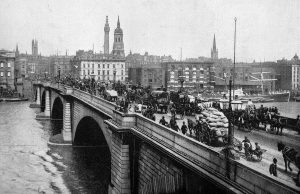
 They say that money can buy you just about anything…if you have enough of it. I suppose that in the area of material things, that might be true. Nevertheless, sometimes I wonder about the purchases made when people have money. Some purchases might be an interesting novelty, and might even have a purpose in the end, but they just seem like a rather extravagant, and yes, eccentric purchase. Nevertheless, for a price, some of the strangest purchases have been made.
They say that money can buy you just about anything…if you have enough of it. I suppose that in the area of material things, that might be true. Nevertheless, sometimes I wonder about the purchases made when people have money. Some purchases might be an interesting novelty, and might even have a purpose in the end, but they just seem like a rather extravagant, and yes, eccentric purchase. Nevertheless, for a price, some of the strangest purchases have been made.
I don’t know if Robert P. McCulloch was an eccentric millionaire, or if he just liked what he liked, but on April 18, 1968, he made a deal to buy the London Bridge, for 1 million dollars. He then had it disassembled from it’s former location spanning the River Thames in London, England, and reassembled in Lake Havasu City, Arizona. As the bridge was disassembled, each piece was numbered to aid in the re-assembly project. Then it was transported to Arizona to be re-assembled over the Colorado River, connecting an island there to the main part of Lake Havasu City. The bridge was originally built in the 1830s. The move was quite the undertaking.
Apparently, McCulloch was searching for a unique attraction for his city. His search eventually took him to London. By the early 1960s it was apparent that John Rennie’s 1831 “New” London Bridge was gradually sinking into the River Thames and the City of London Corporation decided that a new bridge was needed. Still, the bridge was a historic landmark, so rather than demolish the existing bridge, they decided to auction the historic landmark. I guess McCulloch wasn’t the only one with strange ideas. The Arizona bridge is a reinforced concrete structure that is covered in the original masonry of the 1830s bridge. To accomplish an exact duplicate, McCulloch had the exterior granite blocks from the original bridge numbered and transported to America to construct the present bridge in Lake Havasu City, to adorn a planned community he established in 1964 on the shore of Lake Havasu. The bridge was completed in 1971, complete with a canal, and it links an island in the Colorado River with the main part of Lake Havasu City.
Probably the most amazing thing about this is that Lake Havasu City can actually claim that they have the 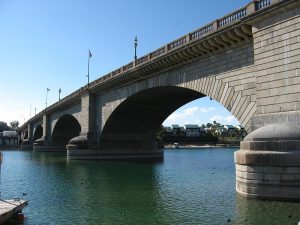
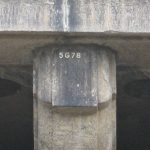 London Bridge there. Many people have made jokes about the intelligence of buyers, saying that if you’ll buy that, they have some ocean front property or even a bridge to sell you in Arizona. Well, I wouldn’t go for the ocean front property, which as we all know, doesn’t exist in Arizona, but the bridge is somewhat believable, although I doubt if this bridge is for sale, and if it was, I don’t know many people who could afford it. Nevertheless, it is a very unique landmark, and a very strange purchase, indeed.
London Bridge there. Many people have made jokes about the intelligence of buyers, saying that if you’ll buy that, they have some ocean front property or even a bridge to sell you in Arizona. Well, I wouldn’t go for the ocean front property, which as we all know, doesn’t exist in Arizona, but the bridge is somewhat believable, although I doubt if this bridge is for sale, and if it was, I don’t know many people who could afford it. Nevertheless, it is a very unique landmark, and a very strange purchase, indeed.
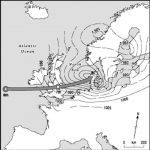
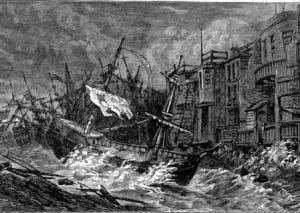 Back in the 1700s, there were no early warning systems for storms, and I suppose it wouldn’t matter anyway, at least not when it came to the Great Storm of 1703. The storm was a destructive extratropical cyclone that struck central and southern England on November 26, 1703, which would actually have been December 7, by today’s calendar. You see the dates all changed with the adoption of the Gregorian calendar, which was originally developed in 1582, but not adopted by England until 1752. The storm brought with it high winds topping 80 miles per hour, which may not seem so extreme on dry land, but over water, it’s devastating. In fact, the wind was so bad, that it actually blew 2,000 chimney stacks over in London. It also blew over 4,000 oak trees down in New Forest. The winds blew ships hundreds of miles off course, and over 1,000 seamen lost their lives on the Goodwin Sands alone.
Back in the 1700s, there were no early warning systems for storms, and I suppose it wouldn’t matter anyway, at least not when it came to the Great Storm of 1703. The storm was a destructive extratropical cyclone that struck central and southern England on November 26, 1703, which would actually have been December 7, by today’s calendar. You see the dates all changed with the adoption of the Gregorian calendar, which was originally developed in 1582, but not adopted by England until 1752. The storm brought with it high winds topping 80 miles per hour, which may not seem so extreme on dry land, but over water, it’s devastating. In fact, the wind was so bad, that it actually blew 2,000 chimney stacks over in London. It also blew over 4,000 oak trees down in New Forest. The winds blew ships hundreds of miles off course, and over 1,000 seamen lost their lives on the Goodwin Sands alone.
London suffered extensive damage. The lead roofing was blown off Westminster Abbey and Queen Anne had to seek shelter in a cellar at Saint James’s Palace to avoid collapsing chimneys and part of the roof. About 700 ships were heaped together in the Pool of London, which is the section of the Thames River downstream from the London Bridge. The ship HMS Vanguard was wrecked at Chatham. Admiral Sir Cloudesley Shovell’s HMS Association was blown from Harwich to Gothenburg in Sweden before it could make its way back to England. Pinnacles were blown from the top of King’s College Chapel, in Cambridge. At sea, many ships were wrecked, some of which were returning from helping Archduke Charles, the claimed King of Spain, fight the French in the War of the Spanish Succession. These ships included HMS Stirling Castle, HMS Northumberland, HMS Mary and HMS Restoration, with about 1,500 seamen killed particularly on the Goodwin Sands. Between 8,000 and 15,000 lives were lost overall.
The Church of England declared that the vicious storm was God’s vengeance for the sins of the nation. Maybe this is where the 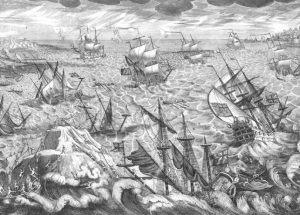
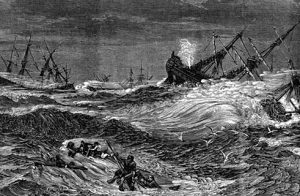 rediculous saying, “act of God” was coined. In fact, Daniel Defoe thought it was a divine punishment for poor performance against Catholic armies in the War of the Spanish Succession. That makes the whole statement even more ridiculous. I suppose people have to explain away these wild occurrences somehow, and since they didn’t have the science to explain the storm, they blamed God for it.
rediculous saying, “act of God” was coined. In fact, Daniel Defoe thought it was a divine punishment for poor performance against Catholic armies in the War of the Spanish Succession. That makes the whole statement even more ridiculous. I suppose people have to explain away these wild occurrences somehow, and since they didn’t have the science to explain the storm, they blamed God for it.

